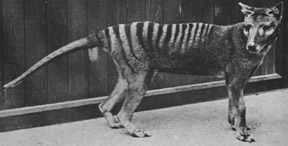
It is always so interesting to watch the how the brain works. To see the spark in a conversation lead to a train of thought, a connection, a memory of something once forgotten, an idea. We were talking about birds and nests. I had just read an article that said how little research had been done on nest-building. We wondered and mused about how and where different birds build their nests. We've been watching the daily labors of a pair of house finches build a nest in one of our spruces. The dread pirate said that he thought some shore birds, or birds of the tundra just lay their eggs on the ground. And that made me think of emperor penguins and where they lay their eggs. Thinking about the emperor penguin reminded me how fascinatingly weird they look, the way they stand like fanatic sentries, with their elegant tuxedo markings and bizarre little wings that don't enable them to fly. How they seem more like a cross between a seal and a bird, not really bird-like at all. I thought, the only thing that could make them any weirder would be if they were a marsupial. The absurd idea of a marsupial bird reminded me of a photograph I had seen once of the last surviving marsupial wolf. I hadn't thought about that photograph for over twenty years. So, I flipped open the laptop, googled marsupial wolf, and there it was: The wolf with a pouch.
Marsupial wolf


Hunted to extinction in the mid 1900s, the marsupial wolf (thylacine) was once called Tasmanian wolf, marsupial dog, zebra dog, and opossum hyena. It was given these names because of its superficial resemblance to placental canids. The shape of the thylacine's head, especially the morphology of the skull, and the elongated body with its long tail and the structure and position of its legs are very wolf-like, but its legs are proportionately shorter, its feet are bear blunt, and have non-retractile claws. So what exactly was this creature?
The marsupial wolf actually has been the subject of controversy and research. In the simplest terms thylacines are a great example of convergent evolution. Convergent evolution is when animals look similar, but are not closely related. They've evolved similar adaptations because they occupy similar niches, although their evolutionary origins are quite different. What researchers have been interested in answering was if thylacines were more closely related to the Australian or South American marsupials. Only detailed analysis of mitochondrial dna could reveal those answers. A quick review of some of the literature produced this abstract:
The phylogenetic position of the recently extinct marsupial 'wolf', or thylacine (Thylacinus cynocephalus), has been a source of contention in mammalian systematics for nearly a century. Thylacines were endemic to Australasia, but possessed striking anatomical similarities to Oligo-Miocene borhyaenid marsupials of South America. At issue has been whether these features are indicative of common ancestry or convergent adaptation to carnivory. Recent morphological studies have supported both conclusions. Although current marsupial classifications group thylacines with Australian dasyuromorphians, this putative clade is characterized by mostly primitive morphological features. Attempts to determine thylacine affinities with ancient protein and DNA analyses have supported, but not resolved, a dasyuromorphian placement. We report 1546 bp of mitochondrial DNA sequence (from cytochrome b and 12S rRNA genes) and 841 bp of nuclear protamine gene sequence from the thylacine and representatives of all or most other marsupial orders. Phylogenetic analysis of these sequences shows unambiguously that thylacines are members of Dasyuromorphia, and suggests a late Oligocene or very early Miocene divergence of familial lineages. (Krajewski C. Buckley, L, Westerman, M. "DNA phylogeny of the marsupial wolf resolved." Department of Zoology, Southern Illinois University, Carbondale 62901-6501, USA).
Or, as one other study succinctly concluded, "... the marsupial wolf was more closely related to other Australian marsupial carnivores than to those of South America. Thus, the marsupial wolf represents an example of convergent morphological evolution to South American carnivorous marsupials as well as to true wolves."
So, marsupial wolves are not very closely related to placental wolves at all, but so beautifully illustrate an evolutionary concept. I remember looking at the photograph that identified a lonely looking creature as the "last marsupial wolf" and it stayed with me for twenty years.
About those emperor penguins, while they are not marsupial, the female does place the egg on the male's feet, which he covers with a fold of skin called a brood patch, and protects it while she can spend weeks in the water hunting for food. The house finch will lay its 4-5 light blue eggs in a nest cup. We should see the nestlings in about two weeks.
I'm so amazing with the incredible force the penguins have, and not also the force but also because they have incredible capacity of retention in their minds according with some articles I read.
ReplyDeleteRobin, here's that video of the thylaciner; http://www.youtube.com/watch?v=6vqCCI1ZF7o&feature=youtu.be
ReplyDeleteThanks for pointing me to this post!